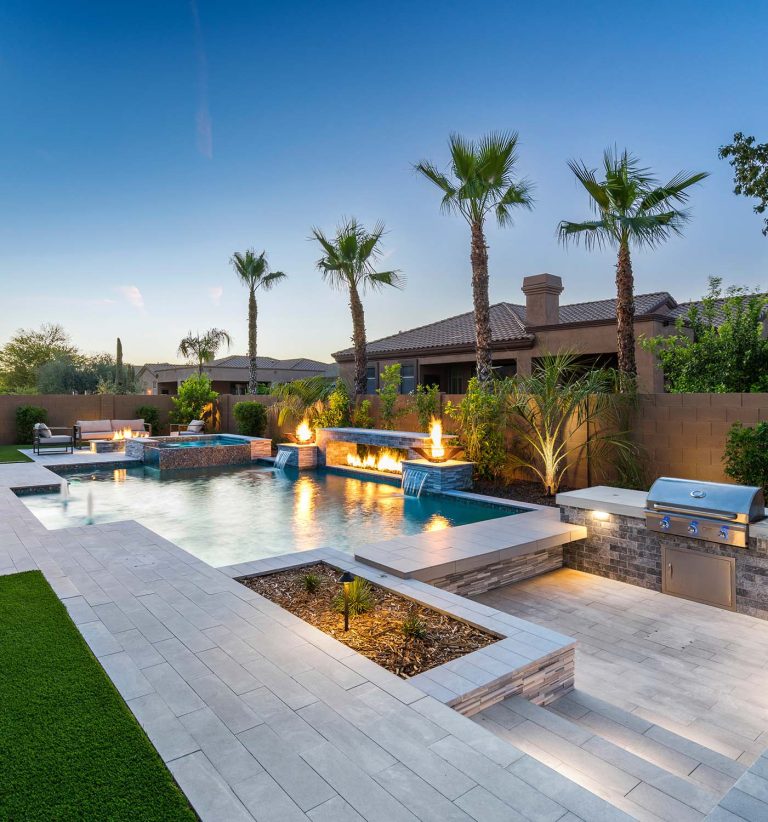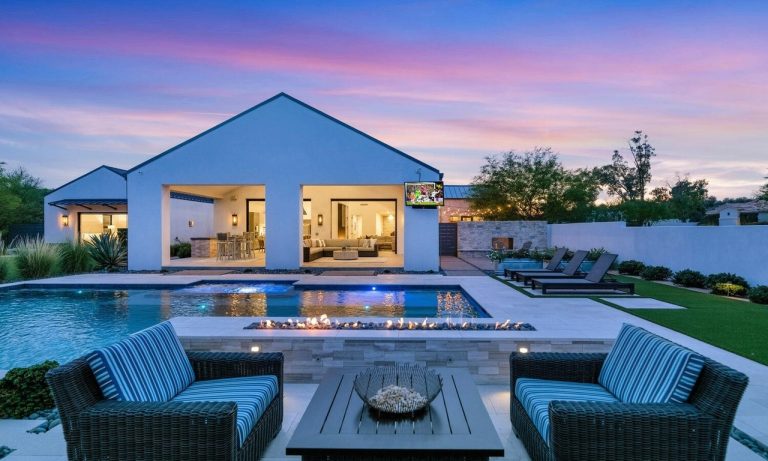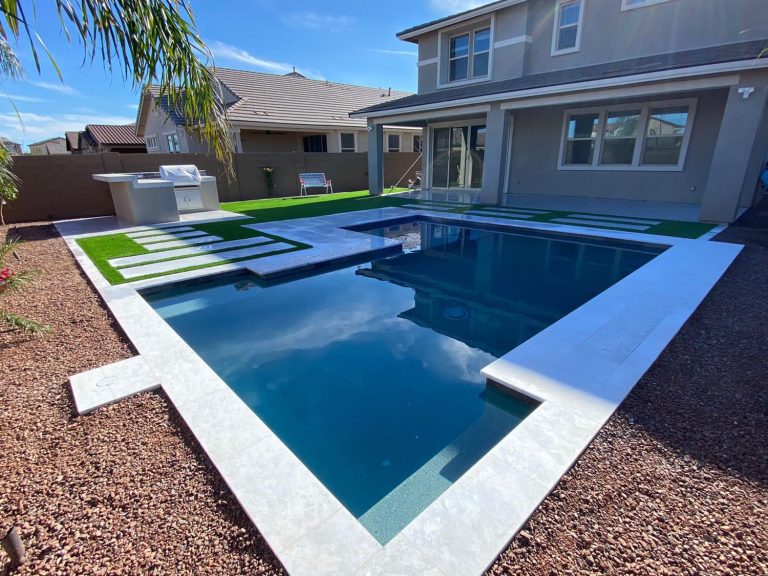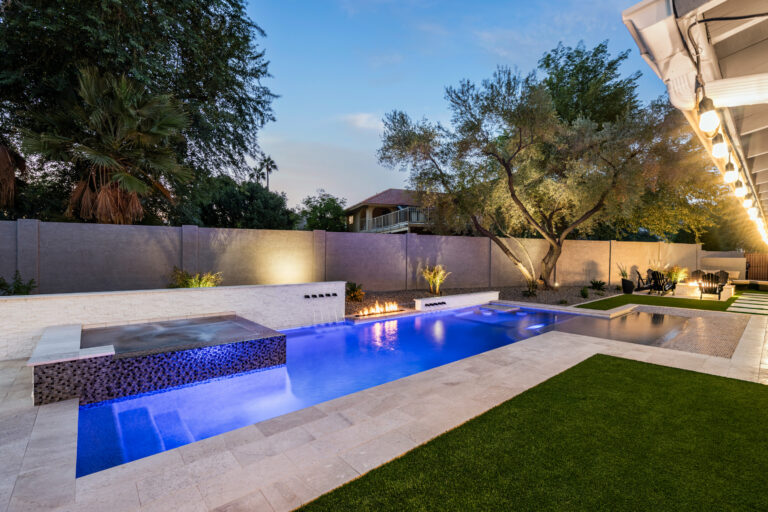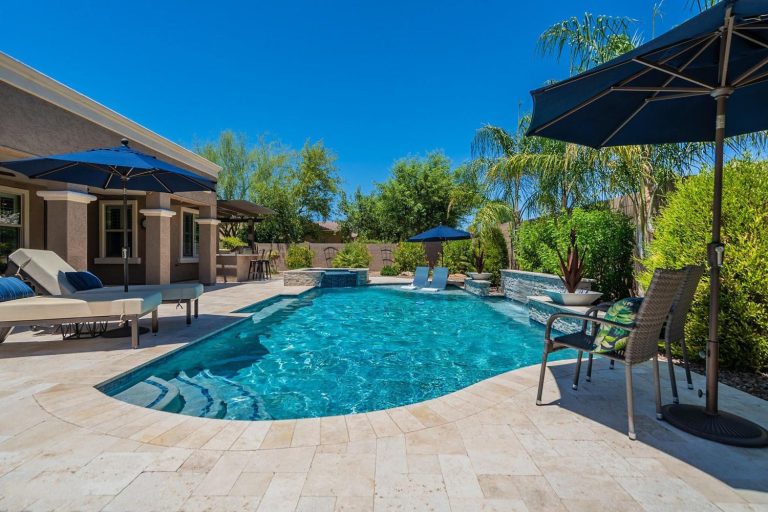Are you tired of draining and refilling your pool when the weather changes? Visit us and learn from an Arizona pool contractor how to winterize your pool. There’s a better solution. While draining, shocking, and brushing will keep it clean, it can cost as much as $200 per month or more, especially if you don’t hire trusted Gilbert swimming pool contractors. Luckily, you can save time and money with these tips for winterizing your swimming pool.
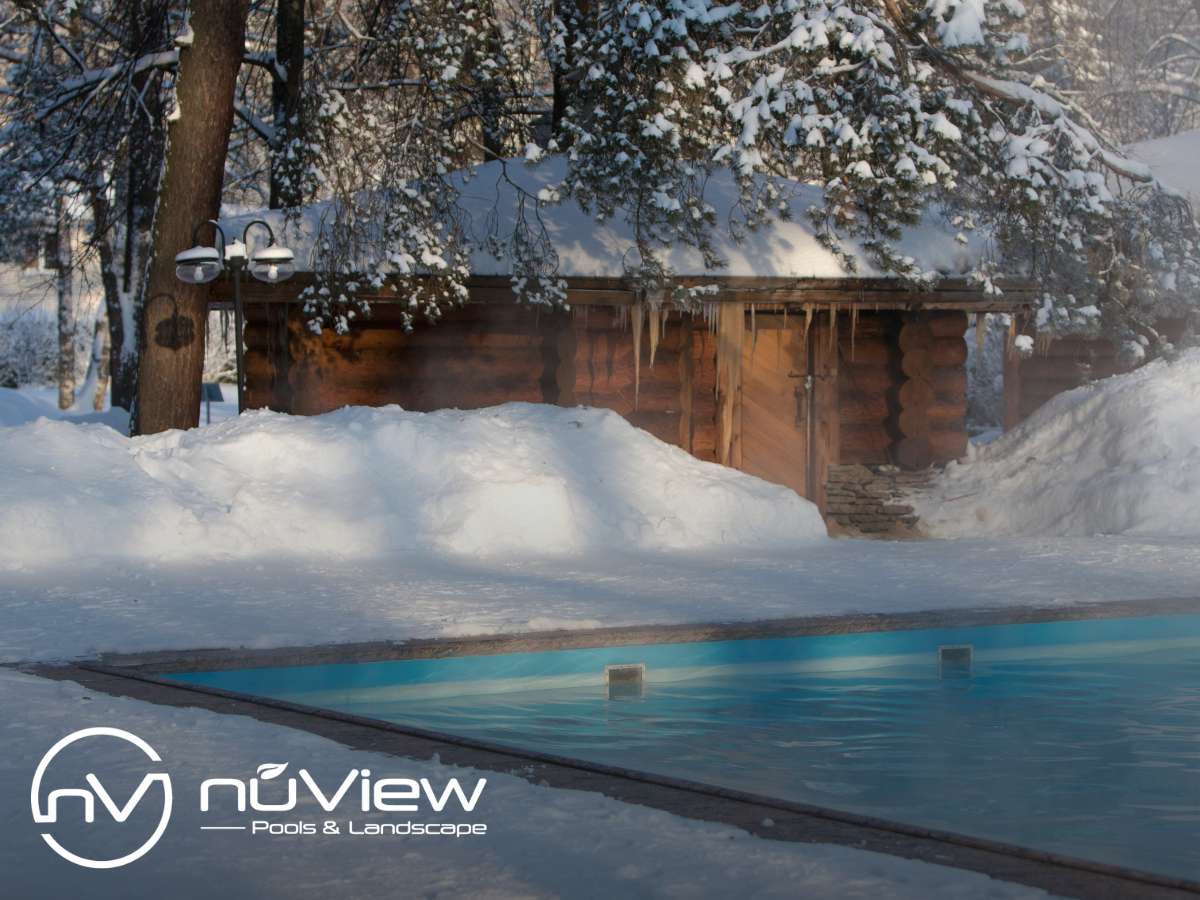
What Is Pool Winterization?
Winterization is the best way to prepare your pool for the cold. Winterizing is the process of reducing and filtering chlorine during the winter season.
By winterizing your pool, you can use less energy and get lower electric bills. Moreover, this process allows you to enjoy your luxury swimming pool once the weather starts warming up.
Winterizing pools helps to lower the possibility of algae growth during the wintertime. The equipment and surface of your pool will suffer severe damage if you don’t winterize it. This means you won’t be able to get your money’s worth because the deterioration will shorten the life of the materials.
Steps To Get Your Pool Ready For Winter
It is best to ensure the success of your pool’s winterization. It is critical to follow these procedures because the process is all about the details. This way, you’ll be able to keep the cold out of your pool during the winter.
By following these steps, your pool will remain in good condition until you call Paradise Valley swimming pool contractors for a special service.
1. Cleaning
The winterization of a pool starts with a complete cleaning of your swimming pool. This cleaning is a crucial part of the winterization process.
To start the process, use a pool skimmer to skim the pool water. This guarantees that all dirt and debris, such as twigs and dried leaves, have been removed. Then, using your pool brush, start scrubbing and brushing each wall and floor of your pool.
The scouring process will remove any algae spores and debris that have accumulated. If the water in your pool becomes murky, brush the area with an algae brush. This will aid in removing algae before it establishes itself on the interior of your swimming pool.
Vacuum all surfaces, especially those with little to no circulation. These are prime locations for algae growth.
2. Start The Winterization
After cleaning the pool, you can start winterizing it. The first step is to test the water levels in your pool. Make sure it has the proper alkalinity, mineral levels, and most importantly, pH balance.
These adjustments will protect your pool from corrosion and scale buildup.
After you’ve resolved this, you can add winter chemicals. San Tan Valley pool contractors are usually necessary for this process, but you can do it yourself if you carefully follow the right steps.
Winter chemicals are necessary to prevent algae growth. You can start with an algaecide. The pool cover will determine the amount you need.
You should add pool enzymes next. They might not be required, but they are effective at removing pool intruders such as spores and algae. Winter Pills are ideal because they dissolve in water while sanitizing and clarifying it throughout the winter.
If you fill your pool with well water, use a metal sequestrant. The water from the wells probably contains metal traces. Metal traces may adhere to the pool sides and rust if there is no metal sequestrant.
A pool antifreeze is a final chemical you can add. It is particularly necessary for in-ground pools. Pool antifreeze will keep pipes from freezing and bursting.
3. Shock The Pool & Lower The Water Levels
Before you close your pool for the winter, shock it one last time. Shocking is the process in which you add chlorine tablets to kill any bacteria in the water.
This process is necessary a few times every year. Scottsdale pool contractors normally recommend it before winter to avoid damage to the filters.
Once you finish the shocking process, make sure your pool pump runs all night long to ensure proper circulation of the chlorine.
After you’ve shocked your pool, start lowering the water level. A slight draining of your pool prevents flood water once the water starts to freeze, although that’s not necessary for places like Arizona because the climate is warmer.
4. Clean The Filters
During winterization, your pool filters become clogged with various types of debris. Remove and clean your pool filters so you have one less thing to clean come spring.
Another thing you should do is blow out your pipelines. This is tricky because one mistake can cause your pipes to burst as soon as it gets cold. It is best to hire a pool professional for this draining.
5. Cover The Pool
You must close your pool if it has salt water. The salt in the water will rust the accessories. To avoid this, remove the pool’s ladder, rails, and other items before drying them and storing them somewhere safe.
Cover your pool, including the pool pump, to finish preparing it for winter.
Where To Find Queen Creek Pool Contractors
If you want to build your customized swimming pool, contact nuView Pools & Landscapes for a high-quality experience. We offer pool and landscaping services to ensure your yard looks the best way possible. Contact us today.
nuView Pools & Landscape
Queen Creek Location
18472 Walnut Rd
Queen Creek, AZ 85142
Phone: 480-581-8753
Email: info@nuviewoutdoor.com
Website: https://nuviewoutdoor.com/
Gilbert Location
1176 E Warner Rd #211
Gilbert, AZ 85296
Phone: 480-758-3100
Email: info@nuviewoutdoor.com
Website: https://nuviewoutdoor.com/
Ready for a Nuview?
SCHEDULE A
CONSULTATION
